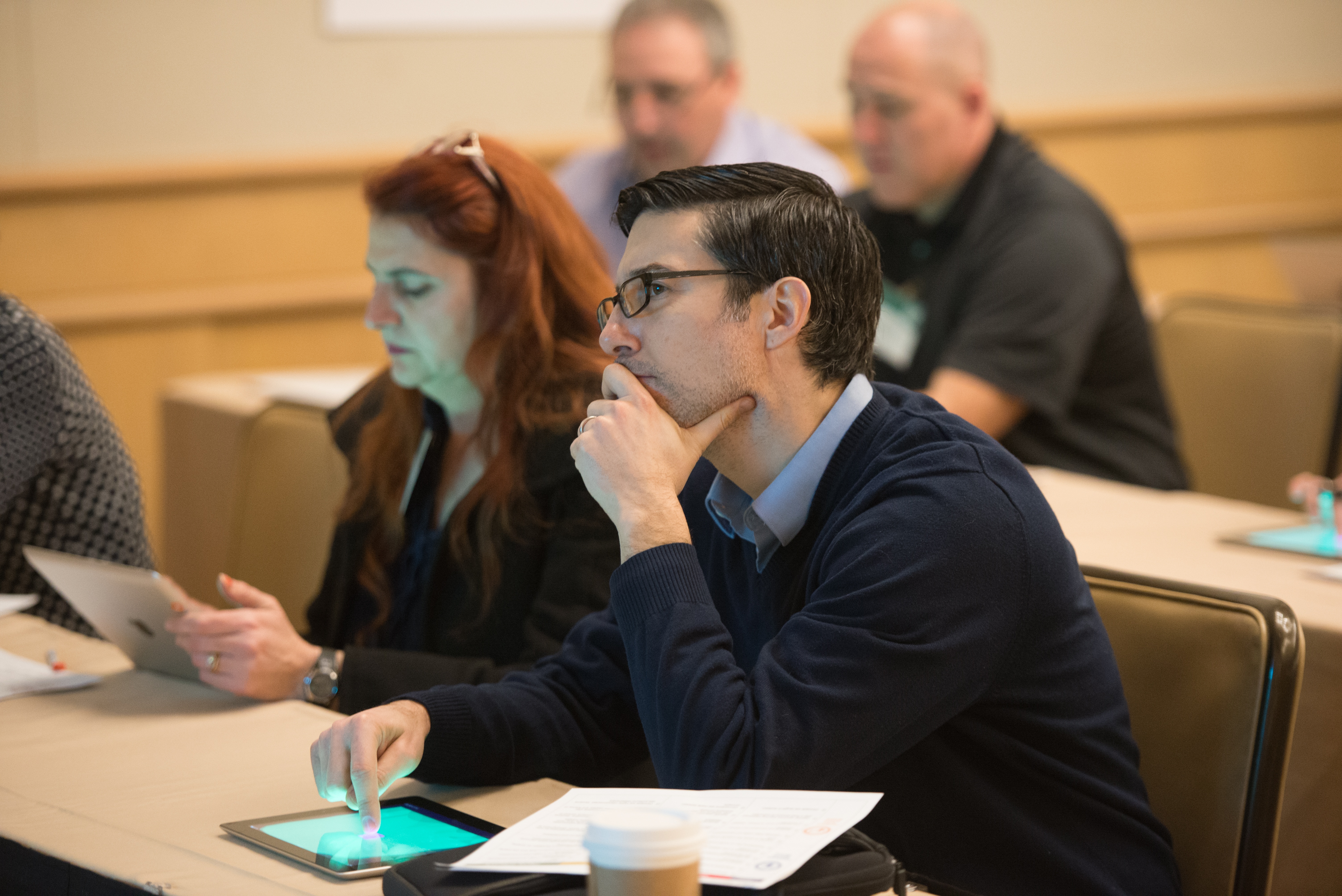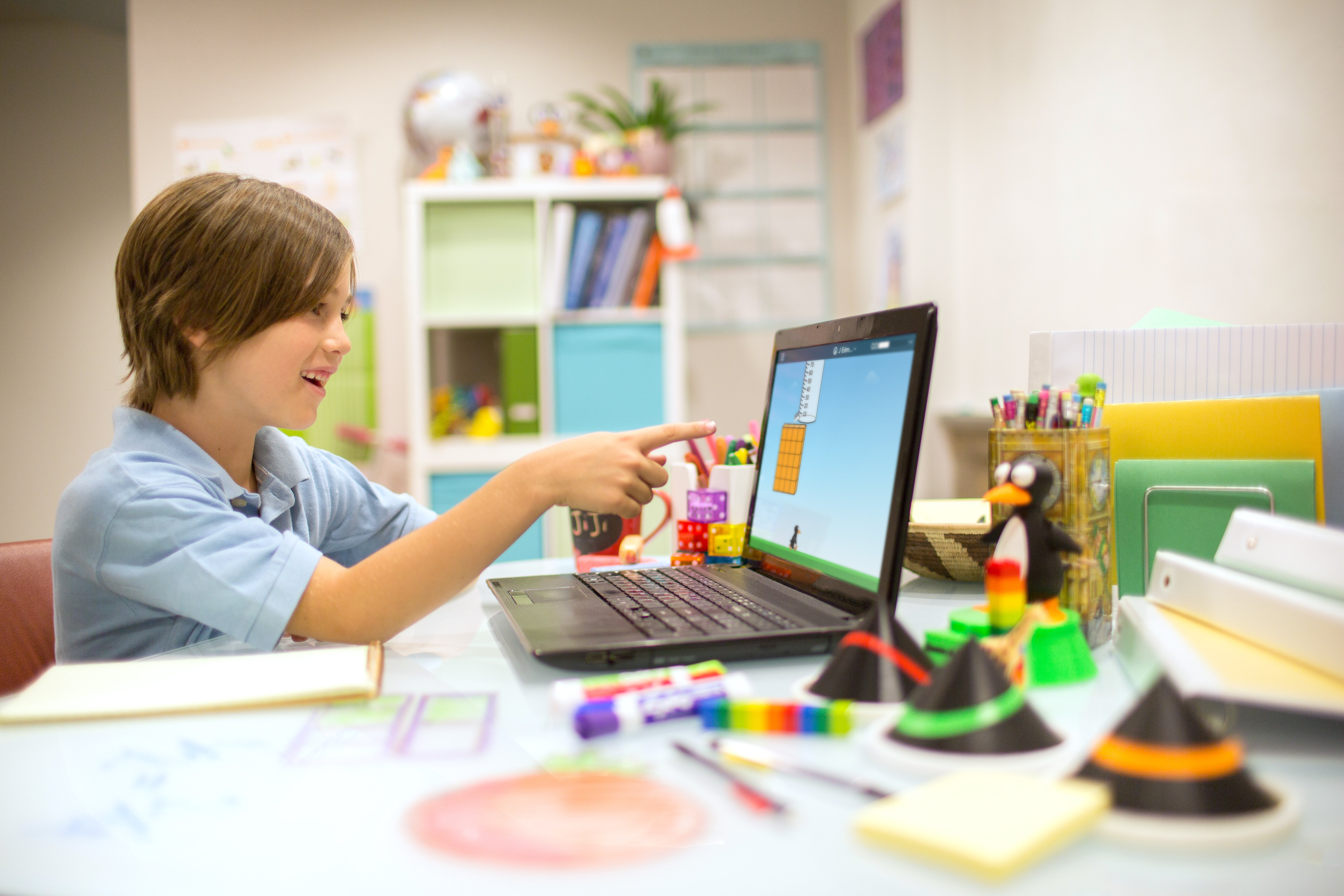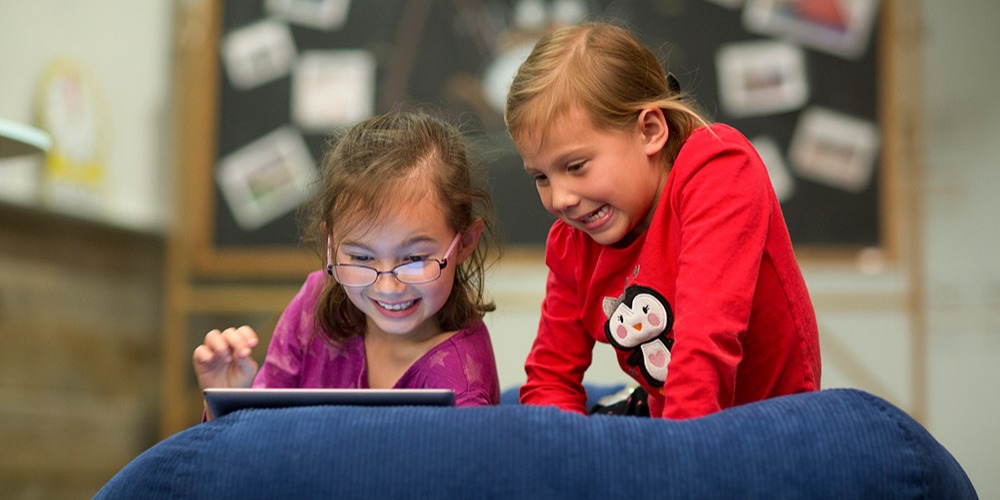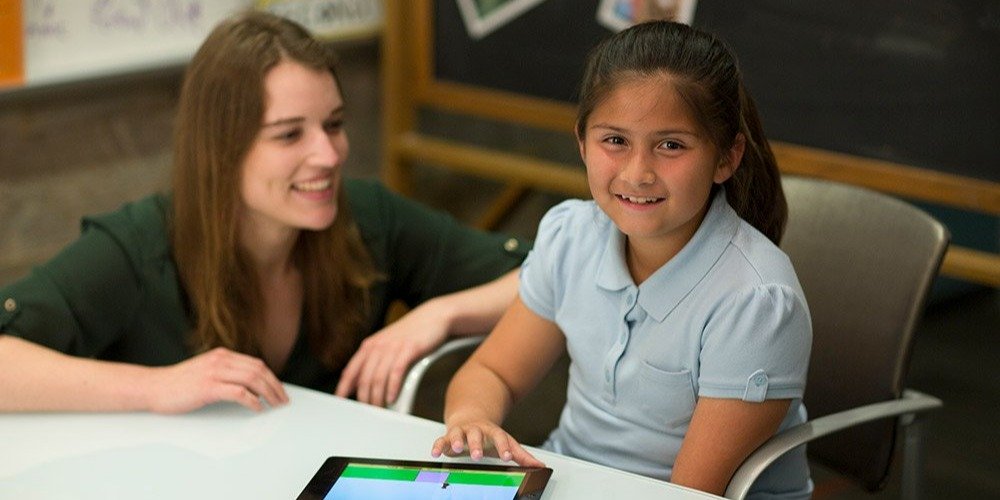
In each installment of our Educator Perspectives series, we interview teachers and administrators across the country who are engaging, motivating, and challenging their students in unique ways. We share their obstacles, successes, and strategies in order to build a community better prepared to mathematically equip all students.
Christopher Dodge is the Principal and Lead Learner of Orange Elementary Schools in Orange, Massachusetts. It's a pre-K–6 school district with about 500 students between two buildings. Dexter Park is the 3-6 school, and right up the hill is Fisher Hill, the pre-K–2 school. All Orange Elementary Schools students receive free breakfast and lunch. The students are predominantly Caucasian, and almost entirely English speakers, with only four English Learners at the two schools.
We started remotely and we continue to be remote as of this writing.
In Massachusetts, we had to develop and submit three plans to the state, which included in-person, remote, and hybrid plans. In August, our school committee decided to start the year remotely, and we continue to do that.
We do have approximately 40 students with high needs or economic disadvantages who come for in-person instruction every day. We also have some students who are on two-day or three-day schedules, and we are developing a process to look at each student individually to begin making decisions about who else should be coming to campus on at least a limited basis.
I created our hybrid plans over the summer and we’ve learned a lot since then, so I’m going to be revisiting those and updating them to present to our reopening committee in the coming weeks. One of the things I’m particularly interested in as we update those plans is ensuring as much consistency for students throughout the week as possible.

Google Everything! Our 3rd- through 6th-grade school was already 1:1, and all of our teachers had Chromebooks, so we were mostly prepared as far as devices. We received federal grant money to get devices for our younger students. We got them all iPads simply because Chromebooks are hard to get right now.
Google Classroom has been pretty important. All of our teachers use it as their main platform. A screen recording app so teachers could record outside of Google Meet or Hangouts and share it with students has been important as well. We chose Screencastify because I found it to be pretty user-friendly in the past. Having an extra screen so teachers can see their students while they share their own screen was something teachers identified as important early on.
Another new tool this year is ST Math.
After the shutdown, I asked a few colleagues what was going well in their districts and one, in a district very similar to mine, said his students were doing more ST Math than anything else.
We didn’t know what the fall would look like, so we were looking for something that would be engaging and helpful for teachers in a remote setting. It definitely fit the bill. The kids just seem to know what to do with a game-based program right away, and it gives us data that we’ve never really had before. It’s a supplemental program—students still have core math time—but we’ve definitely been trying to build more of it into the schedule.
I think the challenge right now has always been my biggest concern, and that’s making sure we don't lose anyone in a town like Orange. We provide a lot of routine support and stability to kids that they might not otherwise have in their home. School and our relationships with kids are incredibly important, and my biggest worry is those kids who are not engaging, who we’re struggling to reach. How do we make sure we have systems in place to keep tabs on those kids and know they’re okay, they’re being fed, they’re safe?
The tech side of things was a challenge at first. It was difficult for our teachers to learn so much on the fly. Staffing is a concern as well. We allow people to work from home as much as possible, but there are still some kids in the buildings who need in-person support or a paraprofessional. Figuring out how to support teachers who are doing incredible work under difficult circumstances is certainly a challenge as well.
But really making sure we’re not letting any kids fall through the cracks is the biggest challenge for us.

I present regionally on innovative practices in education, topics such as the flipped classroom or using social media to build relationships for families. I think this all might be the push we’ve needed to harness technology to accelerate learning. When the rug gets pulled out from under you and you’re forced to use things like Google Classroom or a Chromebook, suddenly maybe you see what they’re good for.
Of course I’m looking forward to a return to in-person instruction, but I think a lot more of us are going to be asking if learning really has to happen in a room where we’re all sitting together, if it can only happen when the teacher says it’s time to learn. Is this the time to reconsider the five-day-a-week model or assessments and standardized testing or the industrial model of education we’ve talked about breaking for years?
I think every teacher in my district would prefer to have kids back in the classroom. Teaching in an empty room is really hard. It’s not the work any of us signed up to do, and it’s not fun.
But I do think they’re learning things.
I think some teachers are seeing success with students they haven’t had success with before. Just the social aspect of school or navigating the day can be overwhelming for some kids, so removing that has allowed some students to really shine in the remote setting.
I am interested to see how teachers’ practice changes regarding that kind of stuff when we come back, but personal feedback and interaction is just irreplaceable. I can’t say my teachers love remote teaching, but we’re making the best of it and looking forward to incorporating the best of it with in-person instruction when it’s safe again.
I always feel like my job as principal is to remove roadblocks so my teachers can be successful. Sometimes they need more support and sometimes less, so I just try to ask them frequently how things are going and what they need. I try to swing by classrooms frequently, not for official observation, but just to learn about their practice. Advocating for them at the district level is important, as is making sure I’m not putting any more pressure on them than they put on themselves right now.
From a planning perspective, we made sure to get our schedule in place early. We have common planning and professional learning community time built into that schedule. Right now we’re focused on making sure we’re providing different levels of professional development because everyone’s needs in that area are different and we want to make sure we’re meeting them all.
Finally, I try to make sure I’m a model of what we’re asking, so these days that means using all the tech tools in a visible way. Sometimes that means learning right along with them, and that’s even better.

Judging by our attendance levels, I think we’re getting pretty good engagement. It’s pretty hard to tell, though, and honestly it varies a lot from student to student. Depending on their learning styles, some kids love it and some kids hate it, but we’ve been developing processes to better support the students who don’t like remote learning.
As with our teachers, I think most of them would say they’d prefer to be in in-person classes, but they’re doing the best they can with what they have. What more can you really ask?
We wanted to start the year by making sure that we had some positive communication with each family, so each teacher reached out to listen, rather than talk. They asked families questions like, “How do you see this year going for your child? What are the challenges you’re facing? How can we help you?”
We wanted that first interaction to be one of caring and support, because a lot of our families are feeling intimidated or stressed out about the coming school year.
Now that school has actually begun, teachers have a Google Form they can fill out to submit to myself and the dean of students if they have concerns about a particular student. From there, we might create a personalized learning plan.
So if a student's not engaging, for example, we help the teachers develop a document with the family that lays out the concerns and challenges along with what everyone agrees upon and what it will look like to bring that child back on track.
We’ve had some students for whom that wasn’t quite enough, however, so we’ve also developed what we’re calling “Remote Learning Academy.” If we determine that there are some things interfering with their ability to learn remotely, we bring them into school and give them staff support to get them prepared to learn from home. Sometimes getting them prepared to learn from home includes teaching their family a few things, but in any case, it’s something we decide on an individual basis and we’ll work with those students and their families until the child can be successful learning in a remote environment.

Despite all of the challenges, one of the things that I've seen us do better than I think we've ever done is engage with parents. Because we can't do this without them, you know, but it's also needed to be done really flexibly. I told the staff we're not going to say to families, ‘you need to show up at this time, for this thing,’ because that's not a reality for some families. Their schedules don't allow it.
We have data team reviews, myself and the dean meet every morning, and we're always looking at data to answer questions like: Where are we with each family?; Are there supports we need to offer?; Can those supports shift and change as families’ needs shift and change?
We’ve been working to determine how we can provide a model that's fluid and flexible while also making sure kids are engaging and participating in school. That's a really fine line we have to walk because every home is so different and we're trying to reach everyone, so it’s a challenge but also a success, I think, for us so far.
I feel like every day is just a lesson in problem-solving lately, but the biggest one we’ve learned is that kids are capable of so much more than we realize.
Kids learning remotely are going to do all the normal things kids do when they’re learning in a class, like talking to their friends. So early on in this remote learning journey, some of our students were talking to friends on Google Chat and some of that conversation was inappropriate. The gut reaction was to get rid of Google Chat.
But we decided to think about how we’d respond if this was happening in school, and the way we’d do that is to have a conversation with them about the fact that Google Chat is part of school, not their homes, and there are different expectations.
Since we had those conversations, we haven’t had to deal with a lot of inappropriate chat messages. It led us to realize that the old ways of dealing with behavioral issues are still the best ways, even if those issues are being acted out through technology, and that our students need some instruction in things like appropriate behavior in a remote learning environment. Overall, I’ve been pleased by how we’ve been able to teach digital citizenship thanks to this year’s unique setting.
Kelsey Skaggs was the Communications Manager at MIND Education. She enjoys highlighting the work of colleagues and partners who champion MIND's mission.
Comment